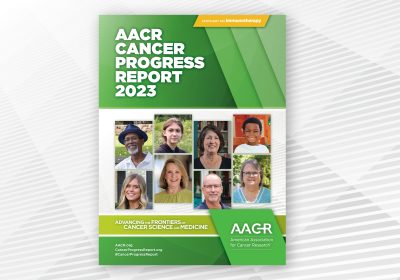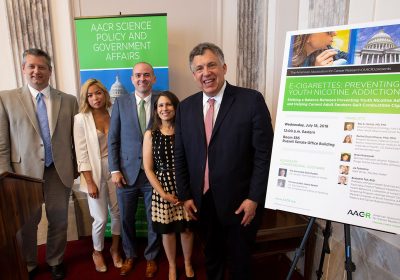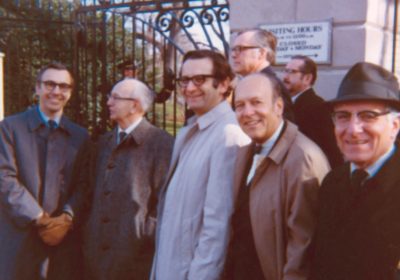Celebrating a Decade of the Rally for Medical Research
Since the initiative to promote federal funds for biomedical research began, the NIH budget has grown by nearly $15 billion.

In 2013, thousands of researchers, health professionals, and patient advocates gathered outside the Walter E. Washington Convention Center in Washington, D.C.—the site of that year’s AACR Annual Meeting—to oppose a planned 5% budget cut for the National Institutes of Health (NIH), the world’s largest funder of biomedical research. Rally attendees voiced support for the NIH and highlighted the importance of biomedical research.
On September 14, 2022, the 10th annual gathering to support biomedical research took place in Washington, the first time in three years rally attendees gathered in person. The AACR is the founding organizer and lead sponsor of the Rally for Medical Research Hill Day, but nearly 400 other organizations also participated this year. Some 300 advocates for biomedical research spent the day on Capitol Hill meeting with House and Senate members and their staff to emphasize the importance of investing in the NIH. Those who couldn’t attend in person were encouraged to contact their representatives’ offices, spread the word about biomedical research on social media, and try to meet congressional members or their staff in local offices.
Prior to 2013, the NIH budget remained essentially flat for a decade. “The chances that a researcher was going to be awarded an NIH grant to uncover scientific knowledge and pursue lifesaving treatments had reached all-time lows,” said Jon Retzlaff, AACR chief policy officer and vice president of science policy and government affairs. At the 2012 AACR Annual Meeting in Chicago, the AACR Board of Directors agreed that the biomedical community needed to act. The goal was a unified effort by the entire medical research community—from rare disease organizations to Alzheimer’s and cardiovascular research associations—to ask that Congress make biomedical research a national priority. The result has been a $14.9 billion increase in the NIH budget over the past seven years.
The three key messages for 2022 Rally participants were to thank their representatives for supporting past funding increases, request a $4.1 billion increase in the NIH budget for fiscal year 2023, and ask that Congress complete the budget in a timely way so researchers can receive their funding.
We are grateful to Congress for [its] sustained, bipartisan efforts to prioritize medical research through investments
in NIH.
– Jon Retzlaff
“We are grateful to Congress for [its] sustained, bipartisan efforts to prioritize medical research through investments in NIH,” Retzlaff said. “I hope to be able report that NIH’s budget will be double what it is today when we are celebrating the 20th anniversary of [the Rally].”
Related Posts





